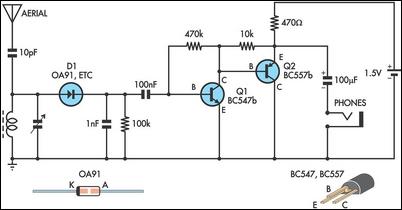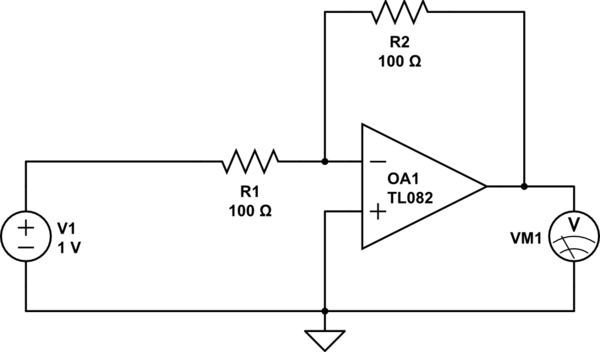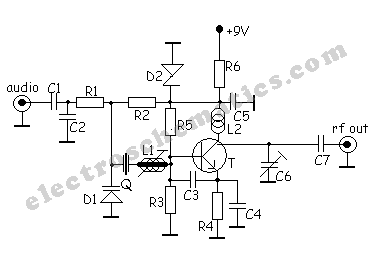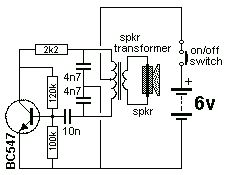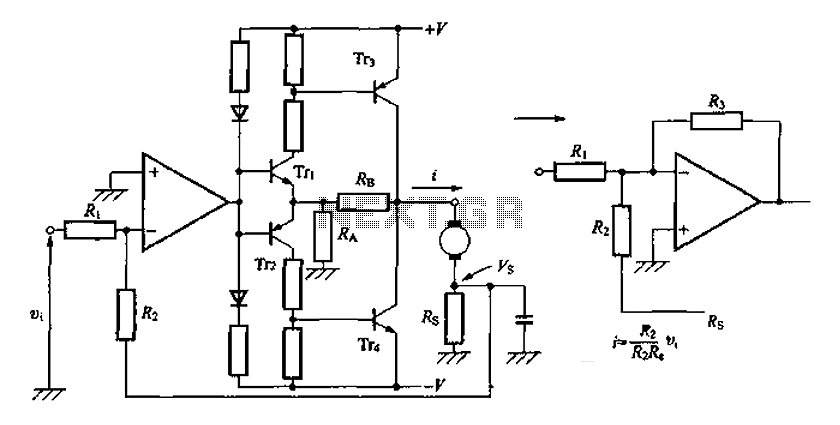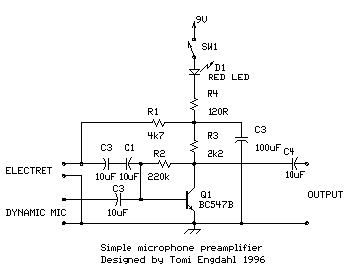
Simple SCR oscillator
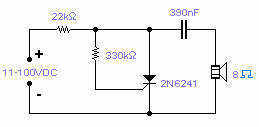
Silicon controlled rectifiers (SCR) can easily oscillate if there is an inductor (a speaker coil in this case) which gives just enough extra voltage to completely switch off the sustain current. In this way a new cycle may start and oscillations set in. It operates over a wide range of supply voltage and components values are not critical at all. Operational frequency in this circuit goes from 100Hz at 11V to 10KHz at 100V.
Silicon Controlled Rectifiers (SCRs) are semiconductor devices that can act as switches and are capable of controlling large amounts of power. In the described circuit, the SCR is utilized in conjunction with an inductor, specifically a speaker coil, to create oscillations. The principle behind this operation is that the inductor can provide a back electromotive force (EMF) that momentarily increases the voltage across the SCR, allowing it to switch off the sustain current. This switching action is critical because it enables the circuit to reset and initiate a new cycle of operation, thereby producing oscillations.
The operational frequency of the circuit is notably versatile, ranging from 100 Hz at a supply voltage of 11V to 10 kHz at a supply voltage of 100V. This wide frequency range indicates that the circuit can be effectively used in various applications, including audio amplification and signal modulation, where different frequencies are required.
Component selection in this circuit is not stringent, which enhances its flexibility and ease of implementation. The SCR can be driven by a variety of input signals, and the inductor's characteristics can be adjusted to achieve the desired oscillation frequency. The ability to operate over a broad range of supply voltages also suggests that the circuit can be adapted to different power sources, making it suitable for both low and high-power applications.
In summary, the SCR-based oscillator circuit is a robust design that leverages the properties of inductors to generate oscillations effectively across a wide frequency range. Its simplicity in component selection and adaptability to various voltage levels make it a valuable configuration in electronic design.Silicon controlled rectifiers (SCR) can easily oscillate if there is an inductor (a speaker coil in this case) which gives just enough extra voltage to completely switch off the sustain current. In this way a new cycle may start and oscillations set in. It operates over a wide range of supply voltage and components values are not critical at all. Operational frequency in this circuit goes from 100Hz at 11V to 10KHz at 100V. 🔗 External reference
Silicon Controlled Rectifiers (SCRs) are semiconductor devices that can act as switches and are capable of controlling large amounts of power. In the described circuit, the SCR is utilized in conjunction with an inductor, specifically a speaker coil, to create oscillations. The principle behind this operation is that the inductor can provide a back electromotive force (EMF) that momentarily increases the voltage across the SCR, allowing it to switch off the sustain current. This switching action is critical because it enables the circuit to reset and initiate a new cycle of operation, thereby producing oscillations.
The operational frequency of the circuit is notably versatile, ranging from 100 Hz at a supply voltage of 11V to 10 kHz at a supply voltage of 100V. This wide frequency range indicates that the circuit can be effectively used in various applications, including audio amplification and signal modulation, where different frequencies are required.
Component selection in this circuit is not stringent, which enhances its flexibility and ease of implementation. The SCR can be driven by a variety of input signals, and the inductor's characteristics can be adjusted to achieve the desired oscillation frequency. The ability to operate over a broad range of supply voltages also suggests that the circuit can be adapted to different power sources, making it suitable for both low and high-power applications.
In summary, the SCR-based oscillator circuit is a robust design that leverages the properties of inductors to generate oscillations effectively across a wide frequency range. Its simplicity in component selection and adaptability to various voltage levels make it a valuable configuration in electronic design.Silicon controlled rectifiers (SCR) can easily oscillate if there is an inductor (a speaker coil in this case) which gives just enough extra voltage to completely switch off the sustain current. In this way a new cycle may start and oscillations set in. It operates over a wide range of supply voltage and components values are not critical at all. Operational frequency in this circuit goes from 100Hz at 11V to 10KHz at 100V. 🔗 External reference
Warning: include(partials/cookie-banner.php): Failed to open stream: Permission denied in /var/www/html/nextgr/view-circuit.php on line 713
Warning: include(): Failed opening 'partials/cookie-banner.php' for inclusion (include_path='.:/usr/share/php') in /var/www/html/nextgr/view-circuit.php on line 713
